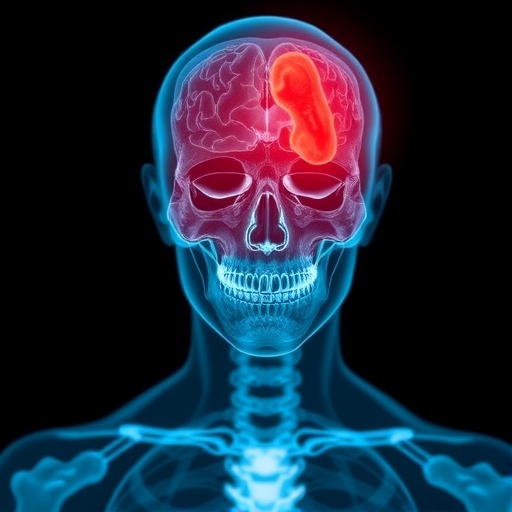In the realm of healthcare, accurate diagnosis is one of the cornerstones of effective treatment, yet the journey to achieving this accuracy is fraught with complexities and potential pitfalls. A new scoping review by Harada, Kawamura, Yokose, and colleagues sheds light on the phenomenon of atypical presentations in internal medicine. This compelling investigation delves deep into how these unconventional clinical manifestations can lead to significant diagnostic errors, ultimately impacting patient outcomes. As we explore this insightful review, we uncover the critical nuances that underscore the importance of recognizing these atypical cases in internal medicine.
The review commences by defining what is meant by “atypical presentations.” These can range from unusual symptoms that challenge conventional diagnostic pathways to presentations that do not align with established clinical expectations. The consequences of failing to recognize these atypical manifestations can be dire, ranging from delayed treatment to inappropriate care, or even, in the worst cases, preventable morbidity and mortality. The authors argue that a deeper understanding of these atypical cases is essential for internal medicine practitioners, as they endeavor to fine-tune their diagnostic acumen in a rapidly evolving healthcare landscape.
One of the most compelling aspects of the review is the indication that atypical presentations are not confined to rare diseases. In fact, common diseases often present in unique ways, further complicating the diagnostic process. For instance, a straightforward infection may mimic the symptoms of a psychiatric disorder, or a well-known cardiac condition could disguise itself as gastrointestinal distress. This illustrates the critical point that clinicians must maintain a broad differential diagnosis and approach each case with a unique perspective.
Moreover, the scoping review highlights the significance of clinician experience and biases in recognizing atypical presentations. Newer practitioners may have a more challenging time identifying these atypical cases due to their limited exposure in medical training. Conversely, seasoned clinicians may inadvertently rely on their own biases, leading them to overlook less common presentations. The interplay between experience and cognitive biases necessitates continuous education and awareness in ruling out diagnostic errors effectively.
Additionally, Harada et al. underscore the role of effective communication in mitigating the risk of diagnostic errors due to atypical presentations. Comprehensive communication among healthcare providers and between providers and patients is paramount. Misunderstandings, lack of clarity, and insufficient dialogue can inadvertently obscure the diagnostic process, especially when a patient presents with atypical symptoms. By fostering an environment of open communication, healthcare teams can collectively navigate the complexities of these cases, facilitating a more accurate diagnostic pathway.
The issue of atypical presentations also raises questions about the existing frameworks for training medical professionals. As such cases frequently arise in clinical practice, there is a compelling argument for reforming the curriculum to enhance focus on diagnostic reasoning, critical thinking, and the ability to recognize atypical presentations during training. The review suggests enhancing exposure to diverse clinical scenarios through simulations and case studies to better prepare future clinicians for the realities of medical practice.
Furthermore, technology’s role in diagnosis cannot be overstated. Advances in machine learning and artificial intelligence offer promising avenues for identifying subtle patterns that may suggest atypical presentations. These technological innovations can augment a physician’s historical and clinical data with predictive analytics, thereby creating a more robust foundation for decision-making. While these tools cannot replace the human touch in patient interactions, they can assist clinicians in navigating the complex landscape of diagnosis in internal medicine.
On the topic of data, the review places significant emphasis on the need for comprehensive data collection regarding the prevalence of atypical presentations across various medical disciplines. With a growing body of evidence, researchers can better understand the patterns associated with these presentations, ultimately informing revisions in clinical practice guidelines. Establishing a standardized approach to data collection will empower future endeavors to address the prevalence and implications of atypical presentations effectively.
Moreover, the psychological impact on patients experiencing misdiagnosis should not be overlooked. Patients may face prolonged suffering due to failed diagnosis, elevating their anxiety and distrust in the healthcare system. Addressing the emotional repercussions is critical, ensuring that practitioners not only focus on the physiological aspects of care but also respect the psychological experiences that accompany medical treatment. Empowering patients with knowledge and involving them in their diagnostic journey can enhance their confidence and resilience in navigating the healthcare system.
The implications of the review extend beyond individual cases; they highlight systemic issues within healthcare. Atypical presentations can reveal larger trends regarding accessibility to care, socioeconomic factors impacting health-seeking behavior, and the overarching design of healthcare delivery. By critically analyzing these dimensions, stakeholders in the healthcare community can strategize on reforms to improve diagnostic practices, ensuring equitable and comprehensive care for patients at risk for diagnostic errors.
In conclusion, the scoping review by Harada and colleagues serves as a call to action for internal medicine practitioners and healthcare systems alike. By embracing the complexity of atypical presentations, fostering improved communication, enhancing training protocols, and leveraging technology, the healthcare community can work diligently to mitigate the risk of diagnostic errors. The path toward achieving accurate diagnoses may be layered with challenges, yet it also presents immense opportunities for growth, learning, and improved patient care. As the landscape of medicine continues to evolve, the insights gleaned from this review will be invaluable in guiding the next generation of clinicians in delivering high-quality care, even in the face of uncertainty.
Subject of Research: Atypical Presentations and Diagnostic Errors in Internal Medicine
Article Title: Atypical Presentations at Risk for Diagnostic Errors in Internal Medicine: A Scoping Review
Article References:
Harada, Y., Kawamura, R., Yokose, M. et al. Atypical Presentations at Risk for Diagnostic Errors in Internal Medicine: A Scoping Review. J GEN INTERN MED (2025). https://doi.org/10.1007/s11606-025-09901-z
Image Credits: AI Generated
DOI: 10.1007/s11606-025-09901-z
Keywords: Atypical Presentations, Diagnostic Errors, Internal Medicine, Clinical Practice, Medical Training, Communication, Technology in Diagnosis




